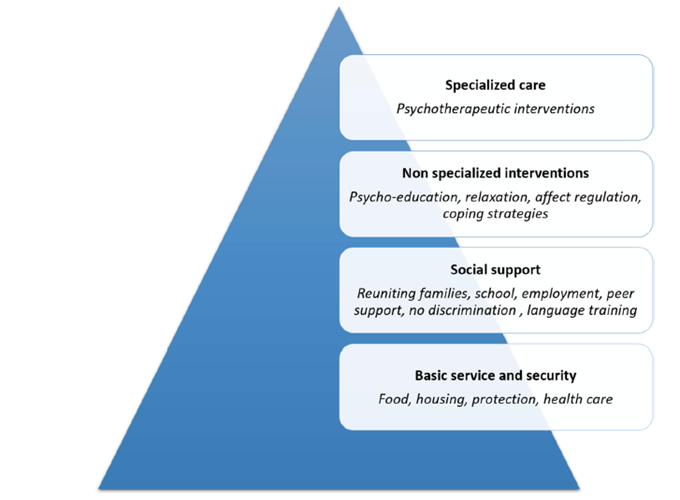Promoting a Child Rights Based Approach to Trauma-informed Care
Trauma-informed Care for Afghan Refugee Children
Child Rights Based Approach
A Child Rights Based Approach to care seems rather vague on the surface until you dig a bit deeper into its meaning and application. The emergence of children’s rights arose during the 19th Century and culminated in the UN Convention on the Rights of the Child (CRC). A Convention is a treaty that countries sign and ratify to state that they will apply the principles to their governing principles. The CRC is the most ratified convention of all treaties and has been ratified by all nations except the United States. However, the U.S. actually helped to write the document and was of the original signatories of the Convention. This section is not meant to provide a comprehensive overview of the CRC. However, it is written to provide an overview of four CRC principles that are applicable to the provision of trauma-informed care. 1
The best interest of the child
In all actions concerning children whether undertaken by public or private sector, the best interest of the child shall be a primary consideration. This has to be preeminent in our working with children.
The right to non-discrimination
Non-discrimination means providers should respect and ensure that each child should be treated the same irrespective of the child's parents or legal guardian, race, color, sex, language, religion, political or other opinion, national, ethnic, or social origin, poverty, disability, birth, or other status.
The right to survival and optimal development
This implies that children are entitled to optimal health care that helps to assure their optimal health and development. This encompasses the prenatal period, infancy, early childhood, middle childhood, adolescents, and their transition to adulthood.
The right to participate and to have their voices heard
This implies listening and respecting the child’s or adolescents’ input to their care. Children are capable of forming their own views and they have a right to express those views in accordance with their age and maturity. This is especially important when we work with refugee children who may have been traumatized.
What is Trauma-informed Care?
As you approach the care of Afghan refugee children it is imperative to incorporate this child rights based approach to trauma-informed care (TIC). The most commonly referenced definition of trauma is from the Substance Abuse and Mental Health Services Administration (SAMHSA). 2
“Individual trauma results from an event, series of events, or set of circumstances that is experienced by an individual as physically or emotionally harmful or life threatening and that has lasting adverse effects on the individual’s functioning and mental, physical, social, emotional, or spiritual well-being.”
SAMHSA outlines an approach to trauma-informed care that incorporates four key elements:
- Realizing the widespread impact of trauma;
- Recognizing how trauma may affect clients, staff, and others in the program, organization, or system;
- Responding by applying knowledge about trauma into practice; and
- Preventing re-traumatization. 3
The SAMHSA report mentioned earlier is extremely informative and we would encourage you to read the full report listed in the references below as you continue your own journey on providing TIC.
Care needs to be envisioned as a continuum of care ranging from a wide support of services for all immigrants to assist in their transition to a new home to very specific therapeutic services for a selective minority of children in greater need. 4
The figure below outlines the continuum of care from basic services and security to specialized care and services for refugee families and their children.

The dropdowns below provide ten approaches and tips for promoting TIC in your practice or clinical setting. 5
